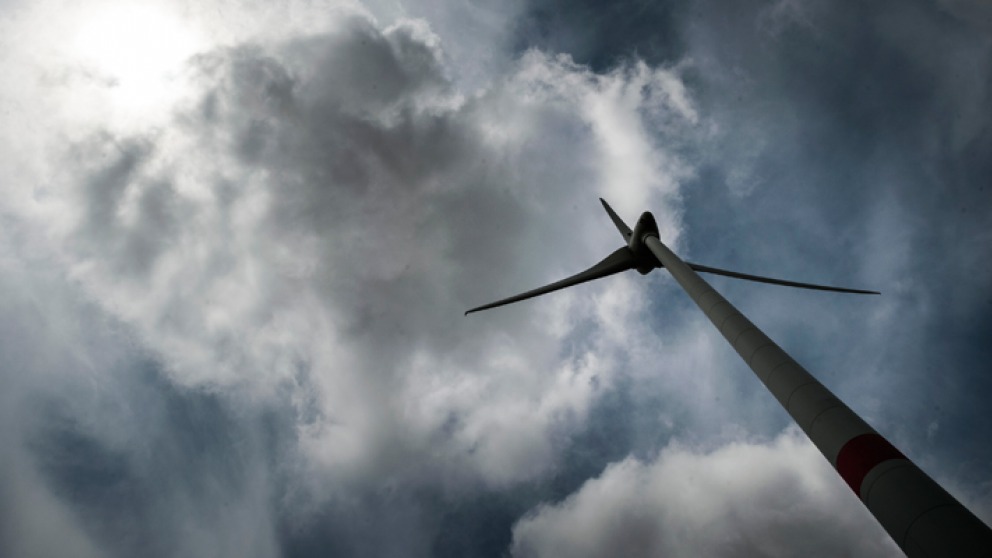Climate Policy under Donald Trump: What is to Become of America’s Energy Transition?
04.05.2017

Clean energy was a key climate policy instrument during the Obama presidency. Obama also understood the promotion of renewable energy, energy efficiency, and comparatively low-emission natural gas as a driver of economic growth (Obama, 2017). Donald Trump has set out his energy policy in the America First Energy Plan – a strategy paper that stretches to about half an A4 page. It focuses on the promotion of fossil fuels with the aim of promoting economic growth and making the country energy independent (The White House, 2017a) . The strategy makes no mention of renewable energy or energy efficiency, and the Trump Administration is, in any case, not completely convinced of either the human responsibility for climate change or the urgency of this problem (Meyer, 2017). So there are clear signs of a sea change: Trump has replaced Obama’s clean-energy narrative with his new growth narrative in which economic growth and the expansion of clean energy are seen as irreconcilable opposites. One hundred days in to the presidency, we’re beginning to understand the implications of this new narrative. Trump appears to be doing his utmost to wipe out Obama’s legacy of an American energy transition based on clean energy.
Obama’s legacy
Under Barack Obama, the USA emerged as an important driver of a global transition to sustainable energy. Obama was the first American president to formulate a climate goal for the USA. As well as promoting energy efficiency, he used his powers to limit the greenhouse gas emissions of power plants (Clean Power Plan), motor vehicles (CAFE standards), and the oil and gas industry. The USA witnessed the rapid expansion of renewable energies during Obama's term, but also experienced a ‘shale revolution’ that led to a boom in the production of shale gas and oil. On the international stage, Obama made the United States the largest donor in international climate finance and initiated international partnerships for climate protection and sustainable energy cooperation (Thielges, 2017). For Obama, an energy supply that protects the climate was part and parcel of a modern, competitive economy.
Trumps fossil volte-face
Donald Trump disagrees, and he is doing his level best to roll back and undermine his predecessor’s policies. His first target is the US Environmental Protection Authority (EPA). President Trump wants to start by curtailing its regulatory powers. His attempt to cut the EPA’s budget by around a third has, however, failed to gain the approval of Congress, and the current budget compromise, which is valid until September 2017, foresees only minor cuts to EPA funding (U.S. House of Representatives Committee on Appropriations, 2017). But Trump will probably try to cut the EPA budget again in the autumn, because he wants to extend more powers to individual states to implement their own environmental standards. In so doing, he seems to be ignoring the fact that these states receive large sums of money from the EPA every year, which are used, for example, to implement environmental protection programmes (Eilperin, Mooney & Mufson, 2017). So cuts to the EPA budget automatically reduce the states’ scope for action. Donald Trump is also targeting various EPA regulatory measures designed to limit greenhouse gas emissions. In March of this year, he announced that the Clean Power Plan is to be withdrawn and completely revised. The same applies to the regulation of methane emissions in the oil and gas sector (The White House, 2017b).
With these measures, Trump is hoping to create better conditions for the coal, gas, and oil industries in the USA. To lend further support to the fossil industry, he has sanctioned the construction or completion of the two pipeline projects Keystone XL and Dakota Access. Obama had previously blocked the construction of the former because of environmental protection concerns. And the completion of the latter was hindered by the protests of the native American tribes on whose land the pipeline is now being built (Zilm, 2017). The coal industry is one of the President’s particular concerns. It has suffered extensive job losses in recent years. After a moratorium under the Obama Administration, Trump has issued an executive order that once more opens public land to new coal mining leases (The White House, 2017b). But it’s questionable that Trump’s measures will actually help the coal industry. That’s because the main reason for its troubles lies in the competition it faces from cheap shale gas, which has become more economical to produce thanks to technological progress. At the same time, there has been a boom in renewable energies. They benefited from tax cuts and renewable portfolio standards in more than half of the fifty US states and have thus become competitive with other energy sources. Trump still has more items on his agenda to repeal the policies of the Obama Administration. Among other things, he plans to review the strict CAFE standards for motor vehicles. He also wants to lift the constraints Obama placed on offshore oil and gas drilling. At the end of April, he issued an executive order that is intended to permit drilling in the Arctic (The White House 2017c).
Changes are also afoot in America’s international engagement for climate protection. While even EPA head and self-proclaimed climate change skeptic Scott Pruitt regards international cooperation on climate protection as important, he still believes that the Paris Climate Agreement is disadvantageous to the USA (Meyer, 2017). The Trump Administration is currently considering whether it should renegotiate or pull out of the Agreement altogether. Both courses of action will stall progress on international climate protection. It’s already becoming apparent that the USA will fail to achieve its climate goal in the absence of a national climate policy. And it will no longer be a driving force that cooperates on climate protection with large emerging economies and industrial nations alike. Other countries will now have to take the lead here. As a donor in the international climate financing sector, the USA is, however, irreplaceable for other industrial nations: the new US federal budget foresees the complete cessation of millions of dollars in payments for international climate finance (U.S. House of Representatives Committee on Appropriations, 2017).
Implications of the new energy policy
Donald Trump is bucking the international trend with his energy strategy. Across the globe renewables are attracting more and more investment, while the financing of fossil energy sources is declining (Röhrkasten, Kraemer, Quitzow, Renn, Thielges, 2016). The US Administration will not succeed in putting a halt to the energy transition in the USA, because the support of major American companies, cities, and states for climate protection is unwavering, and they will continue to independently fund the expansion of renewable energy (Bertram, 2017). But what President Trump can do is slow down the energy and climate transition in the USA by attempting to remove important drivers of this transition such as the regulation of emissions in the electricity and transportation sectors and research on energy technologies. Without a coordinated federal policy, he is also giving southern and central federal states the freedom to continue to ignore climate protection.
In order to achieve the goals of the Paris Climate Agreement and limit global warming to a maximum of 2 degrees Celsius, a swift departure from fossil fuels is essential. Yet Trump’s policies are creating new path dependencies for fossil infrastructure. For example, his support for the coal industry is an attempt to rescue a sector that has not been competitive for some years now. This is needlessly putting the brakes on a turn towards renewables that is already under way. In 2015 more than three times the number of people employed in the coal industry worked in the solar industry alone in the USA (International Renewable Energy Agency, 2016). So Trump’s new growth narrative is not just going to have negative effects on the climate. It also carries risks for the American economy, which is detaching itself from international developments and passing up on an opportunity to assert itself as a market leader in the area of clean energy.
References
Bertram, Rebecca (2017): Die Stunde der Staaten. Perspektiven der US-Klimapolitik unter Donald Trump, in: Internationale Politik: IP, May/June, pp. 90-94.
Crone, Angus/Moslener, Ulf/d’Estais, Francoise; Usher, Eric/Grüning, Christine (2016): Global Trends in Renewable Energy Investment 2016, Frankfurt School of Finance & Management, March 2016, fs-unep-centre.org/sites/default/files/publications/globaltrendsinrenewableenergyinvestment2016lowres_0.pdf.
Eilperin, Juliet/Mooney, Chris/Mufson, Steven (2017): New EPA documents reveal even deeper proposed cuts to staff and programs, in: The Washington Post, 31 March, www.washingtonpost.com/news/energy-environment/wp/2017/03/31/new-epa-documents-reveal-even-deeper-proposed-cuts-to-staff-and-programs/.
International Renewable Energy Agency (2016): Renewable Energy and Jobs Annual Review 2016, www.irena.org/DocumentDownloads/Publications/IRENA_RE_Jobs_Annual_Review_2016.pdf.
Meyer, Theodoric (2017): Pruitt clarifies on climate change, in: Politico, 2 February, www.politico.com/story/2017/04/pruitt-epa-climate-change-236790.
Obama, Barack (2017): The Irreversible Momentum of Clean Energy, in: Science, 9 January, science.sciencemag.org/content/early/2017/01/06/science.aam6284.full.
Office of Management and Budget (2017): America First: A Budget Blueprint to Make America Great Again, https://trumpwhitehouse.archives.gov/sites/whitehouse.gov/files/omb/bud…
Röhrkasten, Sybille/Kraemer, Andreas/Quitzow, Rainer/Renn, Ortwin/Thielges, Sonja (2016): Eine starke Energieagenda für die G20, Institute for Advanced Sustainability Studies (IASS), November 2016, www.iass-potsdam.de/sites/default/files/files/policy_brief_5_2016_de_energieagenda_g20.pdf.
The White House (2017a): An America First Energy Plan, Washington (DC), www.whitehouse.gov/america-first-energy.
The White House (2017b): Presidential Executive Order on Promoting Energy Independence and Economic Growth, Washington (DC), 28 March, https://www.whitehouse.gov/the-press-office/2017/03/28/presidential-executive-order-promoting-energy-independence-and-economi-1.
The White House (2017c): Presidential Executive Order Implementing an America-First Offshore Energy Strategy, Washington (DC), 28 April, https://www.whitehouse.gov/the-press-office/2017/04/28/presidential-exe…
Thielges, Sonja (2017): Donald Trump and the Future of Climate Protection, Potsdam, http://blog.iass-potsdam.de/de/2017/01/donald-trump-und-die-zukunft-des….
U.S. House of Representatives Committee on Appropriations (2017): Comprehensive Government Funding Bill Released, http://appropriations.house.gov/news/documentsingle.aspx?DocumentID=394859.
Zilm, Kerstin (2017): Ölleitung Dakota Access, in: Deutschlandfunk, 1 April, http://www.deutschlandfunk.de/oelleitung-dakota-access-widerstand-gegen….
An earlier version of this piece was published in the publication series of the Atlantic Academy in Kaiserslautern: “Atlantische Themen: The Road Ahead. Analysen zur Trump-Administration” (Link: http://www.atlantische-akademie.de/road-ahead-1-2017/).
Header image: IASS/Norbert Michalke
